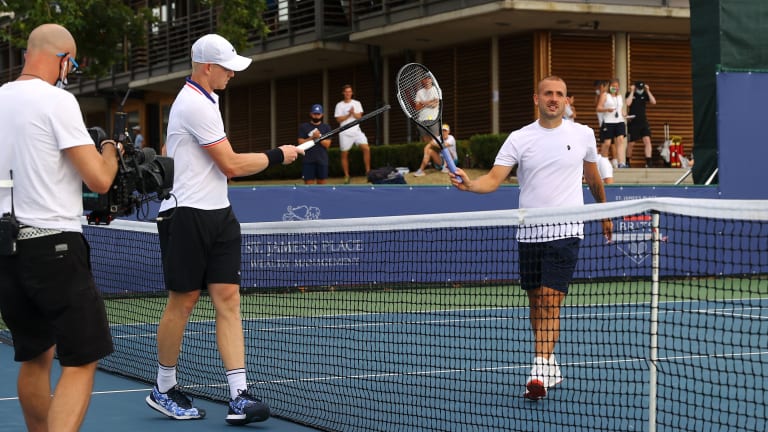Tennis.com Interview
Hard work pays off as Kyle Edmund's comeback picks up steam at Citi Open
By Aug 02, 2022Tennis.com Interview
Alexandra Eala’s breakthrough culminates with Grand Slam debut at Roland Garros
By May 25, 2025Tennis.com Interview
Why tennis is very lucky to have Carlos Alcaraz
By May 18, 2025Tennis.com Interview
Miami Open champion Jakub Mensik: “Clay is in my blood”
By May 12, 2025Tennis.com Interview
Rome: New racquet, sober lifestyle kickstarts latest Bianca Andreescu comeback
By May 10, 2025Tennis.com Interview
“Now, he’s a normal player”: Jannik Sinner’s first opponent post-suspension embraces challenge
By May 09, 2025Tennis.com Interview
Rome: Diana Shnaider declares Dinara Safina coaching split with double bagel
By May 08, 2025Tennis.com Interview
Jack Draper: Affirmations help “create your own reality”
By May 07, 2025Tennis.com Interview
Casper Ruud: Sports psychology “personal training for your feelings”
By May 06, 2025Tennis.com Interview
Alexandra Eala talks 🇵🇭 Filipino fans, Sharapova style ahead of Rome debut
By May 06, 2025Hard work pays off as Kyle Edmund's comeback picks up steam at Citi Open
The 2018 Australian Open semifinalist won his first ATP main-draw match in nearly two years in Washington, D.C., and is already looking ahead to the challenge of playing countryman Dan Evans on Tuesday.
Published Aug 02, 2022
Advertising
Advertising
Advertising

Edmund and Evans faced off during 2020's Battle of the Brits while the ATP and WTA tours were still under COVID-19 lockdown.
© Getty Images